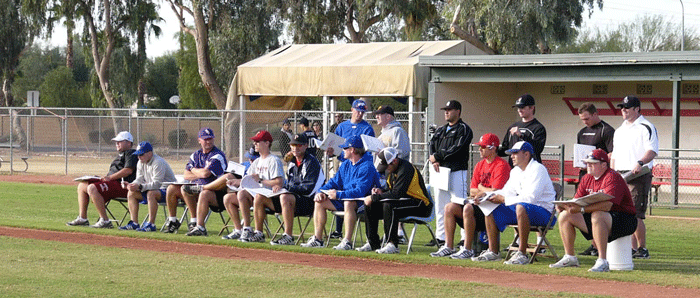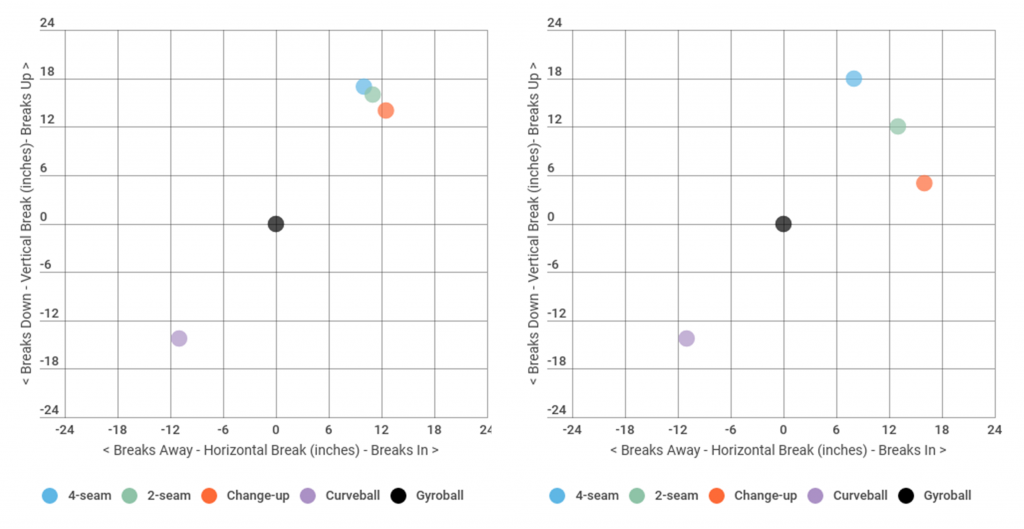
During the past year several showcases announced partnerships with technology companies, whereby participants skills are measured during their events. We’re not talking about the usual 60-yard dash. We’re talking about esoteric topics like vertical bat angles of a swing and spin efficiency levels on a pitch. On the one hand this is great news for the game. Technology is changing baseball for the better and the data can be invaluable for both training and evaluation. On the other hand, although I am a big believer in tech and the value it brings, there is an issue.
Technology is way ahead of training and it will be a while before that changes!
Why? Because the solutions can be complicated, many of the fixes reside outside the nets and require:
-
- Specialized training equipment
- More tech
- Access to a well-equipped weight room
- Most importantly, knowledgeable coaches well-versed in:
- Anatomy that can assess movement strategies
- Programming and period-ized strength training for ball players
- Data analytics
- Knowing the demands of the sport
Today, just about everything can get measured. A lot of folks won’t like me saying this, but you can assess a great deal about a pitcher without even seeing him throw a ball or take a swing. Let me give you an example. Here are two pitchers ball movement charts.

Even without seeing these 2 pitchers throw a pitch, you can tell the one on the right has a better pitch repertoire. The one on the left may think he is throwing 4 different pitches, but he’s only throwing 2. The one on the right, however, is actually throwing 4 different ones. Don’t misunderstand me, it may not be enough to reach definitive conclusions, but you can certainly begin to eliminate prospects based on what you see in the numbers, without ever seeing an athlete perform in front of you.
Aside from the usual metrics, here’s some of the likely data that will be available to coaches from Blast Motion sensors (we’ve listed 6 that we feel are the most relevant to hitters, click here for an expanded discussion on these metrics):
-
- Rotational Acceleration (g)
- Bat Speed (mph)
- Attack Angle (degrees)
- On Plane Efficiency %
- Vertical Bat Angle (degrees)
- Power (kW)
Blast Motion has millions of swings in their database for all different ages. Based off of these data points, they can tell you what’s below average, what’s average, and what’s elite by age group.

So., do you know where you stand on these metrics? Do you know where you stack up vs. others in your age and most importantly, do you know what to do or where to go to help improve them? This is an important question because most times, the answer doesn’t start in the batter’s box. Here’s are a couple examples.
Blast Motion’s Rotational Acceleration measures how quickly you can get onto “your” swing plane.
Let’s say your RA is sub-par. If you ask most coaches how to improve this metric, you might get a “you need to swing harder”, or “you need more hip and shoulder separation” type of answer. The reality is that you can not improve this metric by just taking swings over and over off a tee or during a BP.
Rotational acceleration is a function of how explosively you can swing the bat. This is generated by creating a whip which is a direct by-product of how well you’re sequencing up the kinetic chain. This metric is as much about strength and mobility as it is about skill.
Blast Motion’s Power metric measures the amount of average power (kw) generated during the swing.
Let’s say you have a great swing but according to Blast (for your age group) your “Power” is low. Ask most coaches how you could improve your power and you might get the following, “you need to improve your bat speed”. But that’s not entirely correct. Formula for Power is (Mass) x (Acceleration) x (Velocity). This means Bat Speed is only a part of the equation. If your power is low, you also need to improve your explosiveness. Once again, this isn’t just about skill. It’s also a strength and mobility issue.
Closing
Most baseball training programs are focused on developing and improving skill, which is obviously important. But skill alone doesn’t always get you there. It’s only a part of the equation. Data is exposing players strengths and weaknesses before they even get on the field. If your metrics are sub-par, the fix is likely both inside and outside the nets. You should work with knowledgeable coaches who understand not only the skill required by the sport, but also have a thorough understanding of the body as well. You need both to excel.
You often hear the words “Trust the Process”. Personally I hate that statement. What if the process sucks! I am here to tell you DO NOT TRUST THE PROCESS. Do your homework before you trust anything… Lol.
Bahram Shirazi (BSEE, MBA, Owner RPP)
If you’d like to be placed on our email list please enter your email address below!

